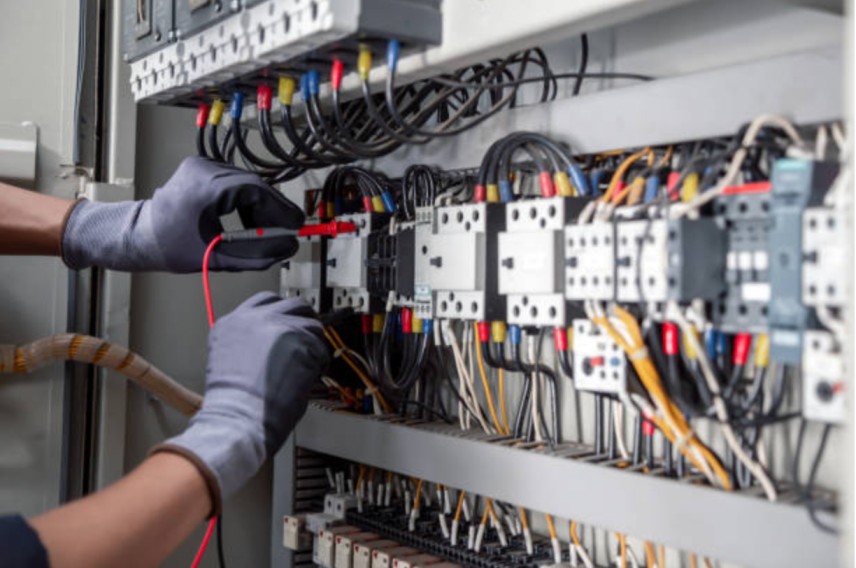Inside factories and big control rooms, electrical relays quietly make sure machines turn on and off safely and smoothly. Whether they are older coil-based units or newer solid-state versions, relays let weak control signals operate tough equipment like motors, heaters, and whole lighting grids.
For businesses in manufacturing, energy, HVAC, or packaging, knowing how relays work-and how to choose the right one-can boost performance, sharpen safety, and cut costs over time. This post walks through relay basics, shows where they fit in common systems, and gives purchasing teams the tips they need when shopping for the parts.
What Is an Electrical Relay?
An electrical relay is a switch you move not by hand but by electricity. In a classic electromechanical model, an electromagnet pulls a set of contacts together; in a solid-state version, tiny semiconductors take care of the job. Either way, the relay keeps the low-control side and the high-power side separate-draining one circuit without the two touching directly.
There are two main types of relays you will come across:
- Electromechanical Relays (EMRs). These have moving metal parts that click as the coil pulls them in. Because of that, they can switch on and off both AC and DC circuits with ease.
- Solid-State Relays (SSRs). Instead of a mechanical arm, these use tiny chips-such as thyristors or triacs-to do the work. Because they have no moving parts, SSRs switch instantly, run silently, and last for years without wear.
Because of those benefits, many factories are now choosing SSRs whenever speed and reliability are key. A quick look at the https://www.omchsmps.com/es/categoria-producto/ssr-relay/ shows dozens of models that fit different voltages, currents, and mounting styles in modern control panels.
Industrial Applications of Electrical Relays
You will find relays in almost any automated setup that needs to jump from one voltage or current level to another. Their small footprint makes it easy to fit them inside control cabinets, onto PCBs, or onto a tidy DIN rail.
Motor Control Systems
In motor control, relays start, stop, and even reverse a motor by opening or closing contactors. They also trip on overload and send a status light to the control room. When switching happens a lot-for, say, a conveyor line-an SSR is often the better choice.
Heating and Cooling Equipment
Industrial ovens, heat exchangers, and HVAC units depend on relays to switch heating elements or compressor motors on and off. Solid-state relays (SSRs) shine in these apps because they manage inductive loads smartly and stop harmful contact arcing.
Process Automation
Modern factories rely on relays for logic control, timed sequences, and safety interlocks. Opening a valve, firing a solenoid, or energizing a pump all happen when relaying bridge sensors, controllers, and actuators.
Energy Management
In smart grids, solar farms, and uninterruptible power supplies, relays steer energy where it is needed. They enable selective load switching, smooth voltage control, and precise power routing.
Lighting and Building Automation
In building management, relays let a single dashboard command lights, fans, and alarms across a facility. DIN-rail SSRs are popular because they operate silently, leaving occupied spaces undisturbed.
OMCH backs each of these applications with relays built for long life, accuracy, and plug-and-play fit in legacy or next-gen control panels.
Benefits of Electrical Relays in B2B Systems
For system integrators and engineers, every relay choice shapes reliability, safety, and room to grow-for the whole system, not just one circuit.
Key Benefits of Using Relays
- Electrical Isolation: A relay physically separates the control circuit from the load circuit, so sensitive low-voltage parts stay safe from high-voltage spikes.
- Flexible Control: Most relays can switch both AC and DC loads, and many come with timers or can be operated remotely.
- High Current/Voltage Capacity: Relays are built to handle heavy-duty currents and voltages that some semiconductor switches can’t manage consistently.
- Compact Size and Versatility: With small footprints, relays slide right into control panels, on PCBs, or in modular systems without crowding.
- Long Operational Life: Solid-state relays (SSRs) have no moving parts, so they last longer and need far less maintenance.
Because of these advantages, relays are often found in complex industrial plants where reliability, backup options, and modular control really matter.
How to Choose the Right Relay for Your Application
Picking the right relay for a factory line or panel means matching the technical specs, the environment it will work in, and how easily it integrates with the rest of the system.
Load Type and Current Rating
Is the load mostly resistive, like a heating element, or inductive, like a motor? For resistive loads a solid-state relay works great; for inductive loads an electromechanical relay (EMR) is still the go-to unless the SSR has an extra snubber circuit.
Switching Frequency
When a circuit needs to switch on and off thousands of times each day, solid-state relays shine because they skip the mechanical wear that eventually grounds an EMR.
Voltage and Phase Requirements
First, check the relay’s voltage rating and whether it works with single-phase or three-phase power. Using a relay that matches your load type and source voltage keeps the system stable for years.
Mounting and Integration
DIN rail, panel, or plug-in versions each bring a different level of ease during setup. Look at the available space and how the relay will fit with enclosures and wiring.
Protection Features
Pick relays with extra safeguards like
- zero-cross switching to cut inrush currents
- over-temperature shutdown
- LED status indicators
- surge protection.
The OMCH SSR product line bundles these features with flexible mounting, making it a go-to choice for OEMs and industrial control teams.
OMCH: Reliable Relay Solutions for B2B Automation
For over thirty years, OMCH has delivered dependable automation parts to factories around the globe. Their deep know-how in relay design, whether in classic EMRs or modern SSRs, shows in every durable product they make.
OMCH relays are built to handle some serious factory conditions:
- They switch industrial voltage up to 480V AC and can carry currents as heavy as 120A.
- They work silently so operators and nearby equipment aren’t distracted by buzzing or clicking.
- They’re rated to meet most global safety and performance marks.
- They fit right into control cabinets, PLCs, and spread-out I/O racks without special hardware.
The company’s solid-state relay (SSR) line gives manufacturers a high-performance option where downtime costs money. From OEM assembly cells to city-wide energy grids, OMCH parts tackle everyday hurdles in modern automation.
Conclusion
Electrical relays sit at the heart of safe, smart factories. They switch big loads, enable remote monitoring, and give crucial feedback, acting as mission-critical gatekeepers for every circuit. Pick the right electromechanical or solid-state model, and a plant gains noticeable gains in speed, safety, and flexibility.
With industrial-grade parts from OMCH, B2B buyers secure trusted, long-lasting devices tested for speed and future growth. Anyone designing or upgrading a control panel should start by checking the OMCH SSR relay category, a simple way to lock in tough switching performance.



